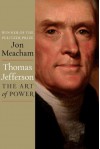Currently reading
400 Years Of Freethought
Thomas Jefferson: The Art of Power
Fairy Tales from the Brothers Grimm: A New English Version
Doubt: A History: The Great Doubters and Their Legacy of Innovation from Socrates and Jesus to Thomas Jefferson and Emily Dickinson
The Kingdom of Matthias: A Story of Sex and Salvation in 19th-Century America
Conceiving the Future: Pronatalism, Reproduction, and the Family in the United States, 1890-1938 (Gender and American Culture)
 Lovett’s 1998 UC Berkeley dissertation underlying this book was subtitled Nostalgic modernism, reproduction, and the family in the United States, 1890-1930. In the new introduction, Lovett says the U.S. “invested heavily in the reproduction of its citizenry during the early twentieth century.” She labels this covert, relatively non-coercive public policy focus “pronatalism” and suggests the subjects of her study “promoted reproduction indirectly.” Setting aside the pronatalist framing argument she introduced in the book, Lovett’s study of five reformers shows how they all used symbols and images of family and rural life, and asks important questions regarding the power these symbols had over the reformers as well as their audiences.
Lovett’s 1998 UC Berkeley dissertation underlying this book was subtitled Nostalgic modernism, reproduction, and the family in the United States, 1890-1930. In the new introduction, Lovett says the U.S. “invested heavily in the reproduction of its citizenry during the early twentieth century.” She labels this covert, relatively non-coercive public policy focus “pronatalism” and suggests the subjects of her study “promoted reproduction indirectly.” Setting aside the pronatalist framing argument she introduced in the book, Lovett’s study of five reformers shows how they all used symbols and images of family and rural life, and asks important questions regarding the power these symbols had over the reformers as well as their audiences.








